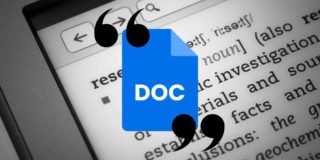Cleaning Up Spoken-Word Recorded Audio With Audacity
Audacity is a freeware application that will run on Windows, Mac or Linux. It may not be the best looking app in the world but it is a true multitrack audio recorder and has pro-style filters in it to “clean up” audio effectively.
If you plan on doing spoken-word recordings (such as for a podcast) and don’t have the cash for fancy microphones or the like, Audacity can fix your audio easily.
In the following example I purposely had a fan running in the background to create noise, and spoke the phrase “The quick brown fox jumped over the lazy dog.”
Here’s what it looked like when I originally recorded the spoken phrase in Audacity:

The original recording (MP3 download)
There’s obviously a lot of noise in there. You can hear the hissssss noise in the background from the fan I had running.
What I need to do first is get rid of that hiss, so I press CTRL+A to select all the audio in the track, then click Effect then Noise Removal.
Looks like this:

From the next small window that appears I modify the sound to my liking:

I moved the slider to the “less” because that seemed to work best.
Now I have this:
The modified recording with noise removed (MP3 download)
However the audio is still a bit on the quiet side. I could use the Amplify filter but I’m going to use Compressor instead.
Looks like this:

After experimenting with the compressor I ended up with this:
Modified (final) recording with noise removal and compression added (MP3 download)
This is right around where I want to be. The hiss has been removed and the compression (which also has the option of auto-normalizing) brought out some more definition in the voice and added volume to boot – so I was happy with that.
This can be applied to any voice recording you do in Audacity.
Although my method here appears to be as simple as 1-2-3, it isn’t. My recording was short and very easy to work with. For longer recordings it takes a bit of practice to get the right noise removal and compression settings for your voice.
All of this is trial-and-error style – but don’t be afraid to experiment because that’s what it’s all about. Audacity is decent software, has the goods and delivers once you get familiarized with what it can do for you.
On a final note: Bear in mind that modifying the audio of recorded instruments is much different than voice because the waves are totally different. What works for voice doesn’t necessarily follow suit for guitars, drums, etc.
However this isn’t to say you shouldn’t try. :-)
















4 thoughts on “Cleaning Up Spoken-Word Recorded Audio With Audacity”
yes you’re correct, free is good, but Free is much better — thankfully Audacity is Free Software under the GPL.
I’m looking forward to any future audio/video blog posts.
Audition and Sound Forge are quite advanced and can be above & beyond what some users require, so reviewing free, easy to use software with some advanced features is always a winning post in my book.